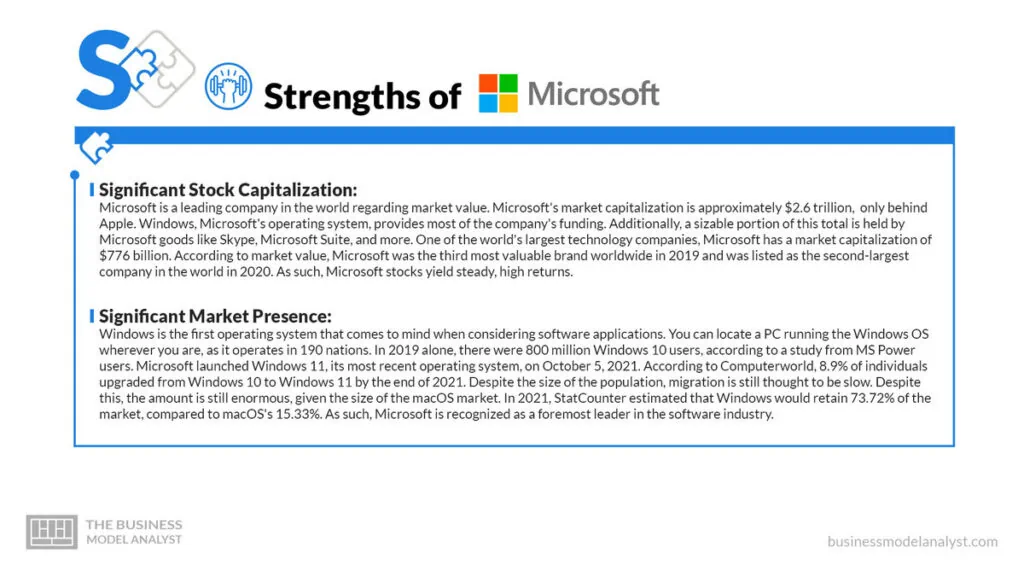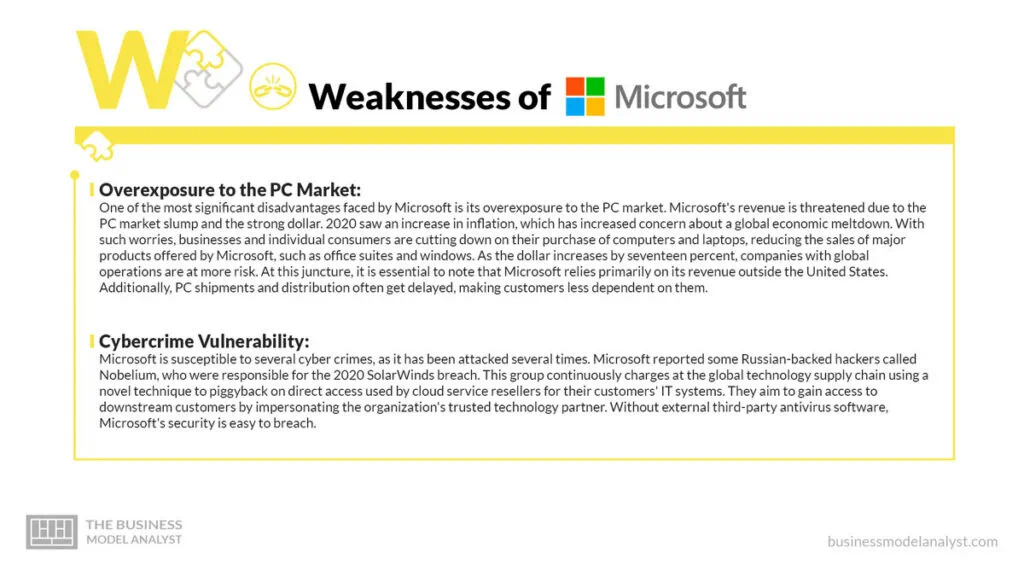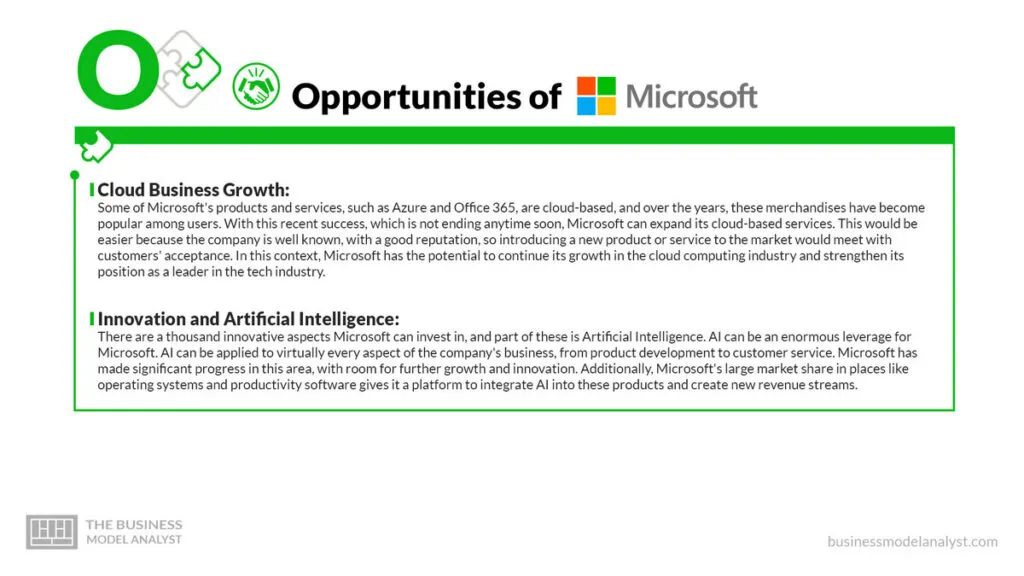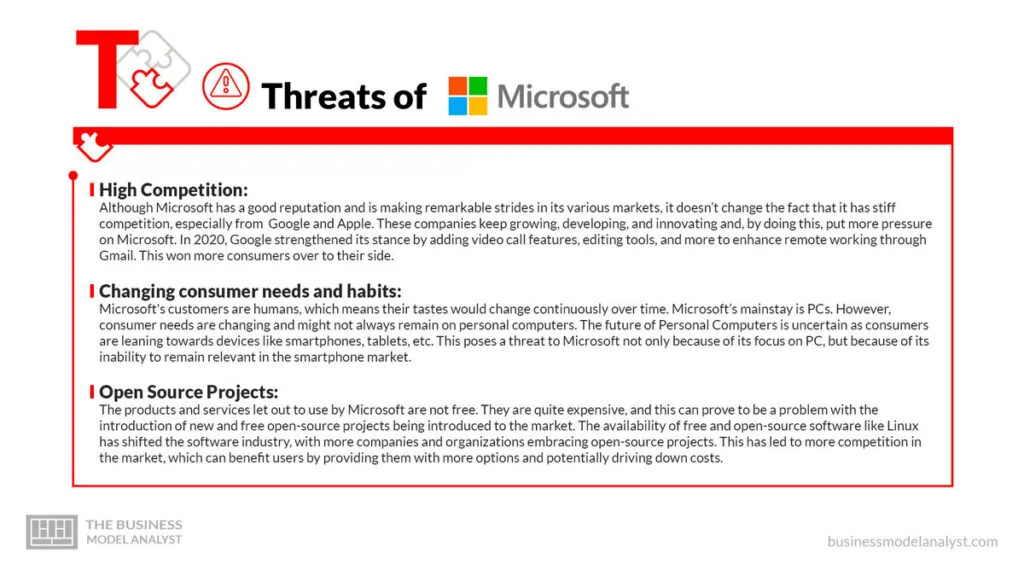From the operating software which makes your laptops, PCs, and even mobile devices work to the latest version of the Xbox gaming console, it seems everyone is using a Microsoft product. How did this company reach the apex of the tech industry and contribute significantly to the technology sector while remaining at the frontline of technical development for more than 40 years? What would the world look like without Microsoft? Here’s how this technological behemoth came to rule the market and secure its position in history.
On April 4, 1975, Bill Gates and Paul Allen founded Microsoft. Gates served as CEO, and Allen proposed the name “Microsoft,” which is short for Microcomputer Software. Paul Allen and Bill Gates were childhood friends who wanted to start a company using their expertise in computer programming. In the middle of the 1980s, MS-DOS (Microsoft Disk Operating System) and Windows propelled to the top of the market for personal computer operating systems. The company has customers all over the globe, which has contributed to its reputation. It is well-known for its Office and Windows programs. After Apple and Amazon, Microsoft became the third American public corporation to have a market cap of $1 trillion or more when it did so in April 2019. Microsoft has the 4th worldwide brand valuation as of 2022. Below is an in-depth Microsoft SWOT Analysis.
Contents
Microsoft’s Strengths

Here, there are some of the advantages Microsoft has over its competitors:
Significant Stock Capitalization
Microsoft is a leading company in the world regarding market value. Microsoft’s market capitalization is approximately $2.6 trillion, only behind Apple. Windows, Microsoft’s operating system, provides most of the company’s funding. Additionally, a sizable portion of this total is held by Microsoft goods like Skype, Microsoft Suite, and more. One of the world’s largest technology companies, Microsoft has a market capitalization of $776 billion. According to market value, Microsoft was the third most valuable brand worldwide in 2019 and was listed as the second-largest company in the world in 2020. As such, Microsoft stocks yield steady, high returns.
Significant Market Presence
Windows is the first operating system that comes to mind when considering software applications. You can locate a PC running the Windows OS wherever you are, as it operates in 190 nations. In 2019 alone, there were 800 million Windows 10 users, according to a study from MS Power users. Microsoft launched Windows 11, its most recent operating system, on October 5, 2021. According to Computerworld, 8.9% of individuals upgraded from Windows 10 to Windows 11 by the end of 2021. Despite the size of the population, migration is still thought to be slow. Despite this, the amount is still enormous, given the size of the macOS market. In 2021, StatCounter estimated that Windows would retain 73.72% of the market, compared to macOS’s 15.33%. As such, Microsoft is recognized as a foremost leader in the software industry.
Strong Distribution Routes
To ensure that computers are offered with pre-installed Windows software, Microsoft collaborates with all major computer peripheral manufacturers, including Lenovo, Dell, Toshiba, and Samsung, as well as major computer retailers. To strengthen its ties with Dell and Nokia, the company also invested in them. Microsoft’s delivery network is significant. The primary medium heavily relies on a select group of crucial middlemen, including approved and independent distributors like Replicators. Microsoft also makes use of its shops as well as merchants like Walmart.
Brands Allegiance
Microsoft has dominated the OS and software industries for a long time, accounting for more than 90% of the PC OS industry. Most people grew up using and will continue to use its user-friendly system. As such, only a few companies can contend with Microsoft. Even open-source operating systems, which are free and well-adapted for use by common users, struggle to draw in users. Sixty million businesses use Office 365, and there are 1.2 billion Office users worldwide. Microsoft has the largest, most devoted customer base. Customers stick with the company because they believe in it.
Simple-to-use Software
Office software and Windows OS are well-liked not only because Microsoft has a powerful monopoly position, robust distribution networks, and a positive brand image, but also because these products are excellent and incredibly simple to use. Whichever Microsoft program you choose, you’ll see that it’s effortless to use. For instance, Windows is straightforward to use. It seems more uncomplicated than some operating systems, such as Linux OS or macOS. Anyone can use Microsoft’s goods, regardless of technical proficiency.
Global leader
Without a doubt, Microsoft ranks among the world’s top businesses. In a recent study from Investopedia, Microsoft was ranked second only to Apple, with a startling market capitalization of $2.6 trillion. If you’re curious about the amount, Worldometer estimates India’s Economy was approximately $2.6 trillion in 2017. As a result, Microsoft enjoys enormous supremacy in the global IT sector, particularly in the software sector. Microsoft is, without a doubt, the industry leader in the software world, particularly in cloud computing. It is both the largest Windows OS developer and the top cloud provider in the globe. It provides paid online services via Dynamics 365, Office 365, and Azure. In the third quarter of fiscal 2020, Microsoft Teams’ daily users grew from forty-four (44) million to seventy-five (75) million in just six weeks and by 110% in the preceding four months.
Brand Image
According to Interbrand, Microsoft is the fourth most valuable brand globally and has the best brand equity and power in the digital sector. Microsoft is rated 13th overall and sixth among the world’s Top Regarded Brands in the Forbes Global 2000 Ranking of 2020. Higher sales and a larger market share are correlated with brand image.
Weaknesses

Despite its strengths, Microsoft is not without its weaknesses. Below, there are some of them:
Overexposure to the PC Market
One of the most significant disadvantages faced by Microsoft is its overexposure to the PC market. Microsoft’s revenue is threatened due to the PC market slump and the strong dollar. 2020 saw an increase in inflation, which has increased concern about a global economic meltdown. With such worries, businesses and individual consumers are cutting down on their purchase of computers and laptops, reducing the sales of major products offered by Microsoft, such as office suites and windows. As the dollar increases by seventeen percent, companies with global operations are at more risk. At this juncture, it is essential to note that Microsoft relies primarily on its revenue outside the United States. Additionally, PC shipments and distribution often get delayed, making customers less dependent on them.
Cybercrime Vulnerability
Microsoft is susceptible to several cyber crimes, as it has been attacked several times. Microsoft reported some Russian-backed hackers called Nobelium, who were responsible for the 2020 SolarWinds breach. This group continuously charges at the global technology supply chain using a novel technique to piggyback on direct access used by cloud service resellers for their customers’ IT systems. They aim to gain access to downstream customers by impersonating the organization’s trusted technology partner. Without external third-party antivirus software, Microsoft’s security is easy to breach.
Unfair Business Practices
Microsoft has once been accused of antitrust violations because it created a market monopoly involving a free browser. Additionally, some employees of Microsoft have blamed senior colleagues for discrimination in various aspects and sexual harassment. In response to these complaints, the CEO, Satya Nadella, acknowledges and takes active steps toward rectifying them.
Lack of innovation
Innovation is the soul of the tech industry. Microsoft’s lack of change has led to the poor performance of its smartphone company. The company’s smartphones and PCs compete less significantly against competitors like Google, Amazon, Android, and Apple. Its Window software phones do not support many applications, and it takes time for the company to create them. Microsoft lacks innovative software and hardware. Instead, it provides upgrades to existing ones. Also, they offer too many versions of the same primary products. Microsoft’s rigidity, however, can be related to the fact that its loyal customers might prefer to maintain their old products, or at most, with some upgrade.
No market leadership in the Internet browser segment
Microsoft is leading the cloud software market. However, in the internet browser segment and Microsoft Edge browser, Microsoft is losing the upper hand. Statista reports that Microsoft has no more than a 5.92 market share in the US, lagging behind Apple Safari and Google Chrome by a large margin. Chrome owns 48.74% of the market share, while Safari owns 36.74%. This loss of market leadership by Microsoft can be attributed to Microsoft’s relenting in marketing.
Unsuccessful acquisitions
Microsoft has spent quite a lot in acquiring several companies, including Nokia. Despite its acquisitions, Microsoft has suffered some misses in the acquisition game. Some of Microsoft’s unsuccessful acquisitions are Nokia, Danger, Tellme Networks, aQuantive, and Navision. Nokia, for instance, was bought at $7 billion when it almost ran out of the market. Nevertheless, Microsoft’s acquisition of Nokia couldn’t handle or prevent its eventual fall out of the market.
Opportunities

Here, there are some opportunities Microsoft can leverage:
Cloud Business Growth
Some of Microsoft’s products and services, such as Azure and Office 365, are cloud-based, and over the years, these merchandises have become popular among users. With this recent success, which is not ending anytime soon, Microsoft can expand its cloud-based services. This would be easier because the company is well known, with a good reputation, so introducing a new product or service to the market would meet with customers’ acceptance. In this context, Microsoft has the potential to continue its growth in the cloud computing industry and strengthen its position as a leader in the tech industry.
Innovation and Artificial Intelligence
There are a thousand innovative aspects Microsoft can invest in, and part of these is Artificial Intelligence. AI can be an enormous leverage for Microsoft. AI can be applied to virtually every aspect of the company’s business, from product development to customer service. Microsoft has made significant progress in this area, with room for further growth and innovation. Additionally, Microsoft’s large market share in places like operating systems and productivity software gives it a platform to integrate AI into these products and create new revenue streams.
Partnerships and Acquisitions
By partnering and making alliances with some companies, Microsoft can grow and gain high market shares. They can reach even more consumers. For example, Microsoft’s acquisition of Nokia can help it reach a wider audience, i.e., smartphone users. However, it needs to work on this acquisition. This also applies to acquiring other firms, especially hi-tech firms. The company has a large cash reserve, allowing it to acquire new start-ups and tech companies with potential. In 2020, Microsoft made a five-year deal with Coca-Cola. The deal involved supplying the company’s business software, a significant win for Microsoft.
Smartphone Industry
While they have had their fair part of producing these devices, Microsoft does not have the best history with smartphones. From their Symbian OS-based phones to Lumia Windows OS-based phones, the company’s strides in the smartphone market have been ineffective. Even after acquiring Nokia, they have recorded no growth in the market and are behind major companies like Android and Apple. That said, there is an open opportunity for Microsoft to explore the smartphone market better by researching and producing better smartphones.
Gaming Industry
Xbox is only one of Microsoft’s many impressive creations. A well-known game system that has been around since 2001 is the Xbox from Microsoft. Although it is one of the most prominent gaming systems in the world and has a large library of titles, Microsoft’s Xbox still trails Sony’s PlayStation and Nintendo’s Switch in terms of market share and popularity. Sony and Nintendo have been in the gaming industry for a lot longer than Microsoft, which has given them an advantage in terms of creating their brands and gaining devoted fan bases. Microsoft has the chance to strengthen Xbox’s standing in the gaming market and attract a larger audience.
Remote Work Solutions
While remote work has existed for a while, it did not have as much popularity as it does now. With the increase in remote jobs, there is a need for online services that make collaboration and communication easy for employers, employees, and partners. Microsoft can leverage this by enhancing its remote work solution (Microsoft Teams) for users.
Threats

Here, there are some of the threats Microsoft faces:
High Competition
Although Microsoft has a good reputation and is making remarkable strides in its various markets, it doesn’t change the fact that it has stiff competition, especially from Google and Apple. These companies keep growing, developing, and innovating and, by doing this, put more pressure on Microsoft. In 2020, Google strengthened its stance by adding video call features, editing tools, and more to enhance remote working through Gmail. This won more consumers over to their side.
Changing consumer needs and habits
Microsoft’s customers are humans, which means their tastes would change continuously over time. Microsoft’s mainstay is PCs. However, consumer needs are changing and might not always remain on personal computers. The future of Personal Computers is uncertain as consumers are leaning towards devices like smartphones, tablets, etc. This poses a threat to Microsoft not only because of its focus on PC, but because of its inability to remain relevant in the smartphone market.
Open Source Projects
The products and services let out to use by Microsoft are not free. They are quite expensive, and this can prove to be a problem with the introduction of new and free open-source projects being introduced to the market. The availability of free and open-source software like Linux has shifted the software industry, with more companies and organizations embracing open-source projects. This has led to more competition in the market, which can benefit users by providing them with more options and potentially driving down costs.
Potential lawsuits
Microsoft has a long history of being sued, like many other big businesses. Several things, such as claims of anticompetitive behavior, patent infringement, and contract violations, may bring about these lawsuits. Large-scale litigation involving significant financial and legal resources has been filed. If they continue operating and performing as they currently do, there is a chance that they will continue facing these cases. This is a problem since these cases could have negative reputational, financial, and legal effects on Microsoft. Also, they will waste the company’s time and resources and divert attention away from the primary tasks.
Criticisms
Apart from lawsuits that cost Microsoft time and money, the company has also faced other criticisms, which can push potential customers away. First, Microsoft has been criticized for the imbalance in its employed workforce. These criticisms arose from the release of Microsoft’s 2018 workforce diversity, which showed that fewer women and minorities were working in the firm. Also, Microsoft faced more criticisms because of a feature in its Xbox Live that prevents people from using homosexual and gay references in their gamer tag and user profile. The reason was that such terms were unsuitable and offensive to other users.
Anti-Encryption drive
As part of its features in all its products and services, Microsoft allows for the encryption of consumer operations. This, however, does not sit well with the government and some child welfare companies. To be able to catch child predators and criminals, these parties want Tech companies like Microsoft to get rid of the encryption technologies which allow these offenders to operate online with impunity.
Cybersecurity threats
As a leading technology company, Microsoft is a high-value target for hackers and cybercriminals. Cyberattacks can come in various forms, including phishing, ransomware, and malware, and they can cause severe damage to the company’s reputation and financial losses. Phishing attacks are commonly used to gain access to Microsoft’s systems, where attackers send fake emails or messages that appear to be from trustworthy sources, such as Microsoft’s IT department or partners. Ransomware attacks, on the other hand, can encrypt the company’s data and demand a ransom payment in exchange for a decryption key. Malware can also be installed on the company’s systems to steal sensitive data or cause damage to its infrastructure. Aside from financial losses, security breaches can harm Microsoft’s reputation and erode customer trust. The negative publicity surrounding a security incident can have long-term effects on the company’s brand image.
Regulatory challenges
Microsoft works in a highly regulated sector and must contend with numerous regulatory obstacles on a global scale. Among the significant obstacles are antitrust investigations, data privacy laws, legal battles over intellectual property, and cybersecurity laws. Microsoft’s monopolistic market position and its effects on the competition and consumers are the main subjects of antitrust investigations. Microsoft is subject to a number of international data privacy laws because it is a technological corporation that handles enormous volumes of customer data. When other businesses or people assert that Microsoft has violated their intellectual property rights or when Microsoft asserts that others have violated its rights, intellectual property disputes may result. Cybersecurity regulations must be followed to safeguard businesses and consumers from growing cyberattacks.
Conclusion
Since Bill Gates and Paul Allen founded Microsoft Corporation in 1975, a lot has changed in the tech industry. The corporation has managed to rank among the most prosperous and significant technology companies in the world because of its cutting-edge goods and aggressive commercial tactics. Microsoft swiftly established itself as a critical participant in the computer industry, starting with the creation of MS-DOS. With the introduction of Windows and Microsoft Office, it became the industry leader in developing operating systems and productivity tools. Microsoft has continued to innovate and release successful products, such as the Xbox and its Windows operating systems, despite facing growing competition from firms like Google and Apple. The Azure platform for cloud computing and Microsoft’s acquisitions of businesses like LinkedIn and GitHub are just a few of the many products and services the diverse technology firm offers today. Microsoft’s sustained success is due to its capacity to adjust to market shifts and maintain its position as the market leader in technology. However, it must explore new products and markets to stay ahead of the competition.


